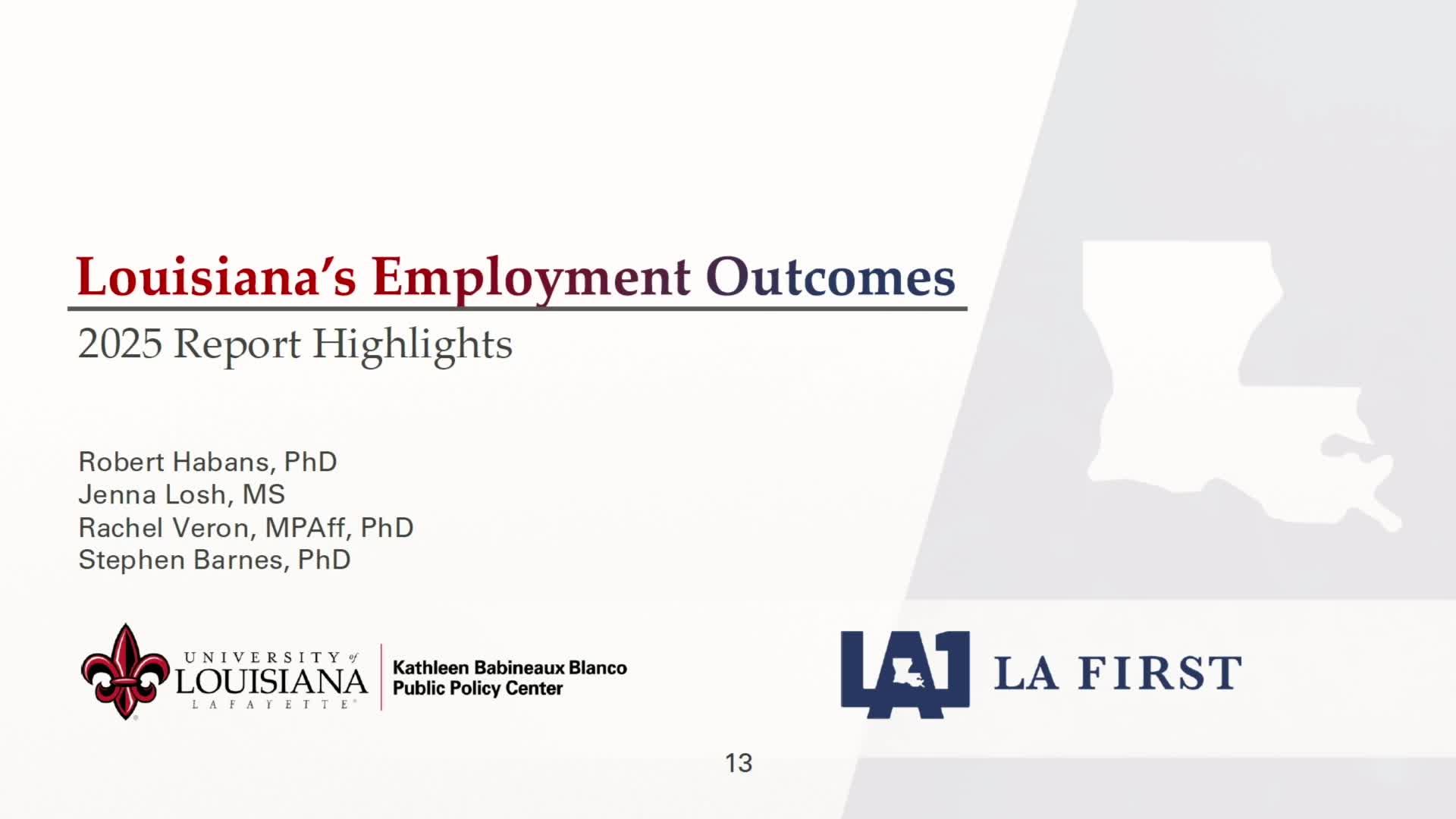Louisiana Report Reveals Gender Disparities and Wage Mobility in Workforce Education Outcomes
August 08, 2025 | 2025 Legislature LA, Louisiana
Thanks to Scribe from Workplace AI , all articles about Louisiana are free for you to enjoy throughout 2025!

This article was created by AI using a video recording of the meeting. It summarizes the key points discussed, but for full details and context, please refer to the video of the full meeting. Link to Full Meeting
One of the key findings presented was the increasing number of higher education completers earning certificates, with women outpacing men in degree attainment by 55% in the most recent academic year. This trend reflects broader national patterns, with women more frequently completing degrees in health and social sciences, while men dominate fields such as construction and engineering.
However, the meeting revealed surprising wage outcomes, particularly for men with associate degrees and short-term credentials. By 2023, men from the 2014-2015 cohort who earned an associate degree reported median earnings of $75,000, significantly higher than their female counterparts, who earned approximately $47,000. This disparity raises questions about the factors contributing to these wage differences, which the committee plans to explore further in upcoming reports.
The discussion also highlighted specific career pathways, focusing on licensed practical nurses (LPNs), registered nurses (RNs), electricians, and HVAC technicians. Notably, over 70% of LPNs and RNs found employment aligned with their training, indicating effective workforce preparation. However, a concerning trend emerged regarding RNs, as fewer were employed several years post-completion, suggesting a potential mobility issue within this critical workforce amid a statewide nursing shortage.
Wage mobility was another focal point, with data showing that workers in lower-earning occupations experienced the highest relative wage increases since 2016. Yet, the overall distribution of wages remained closely tied to initial occupations, indicating limited mobility for many workers outside of higher education pathways.
In conclusion, the JLCB meeting underscored the importance of understanding wage dynamics and educational outcomes in Louisiana. As the state grapples with workforce challenges, particularly in nursing, the findings from this meeting will inform future policy decisions aimed at enhancing economic opportunities for all residents. The committee's next steps will involve deeper analysis into the factors influencing these wage disparities and the effectiveness of educational programs in meeting labor market demands.
Converted from House JLCB Aug 8, 2025 meeting on August 08, 2025
Link to Full Meeting
Comments
View full meeting
This article is based on a recent meeting—watch the full video and explore the complete transcript for deeper insights into the discussion.
View full meeting
